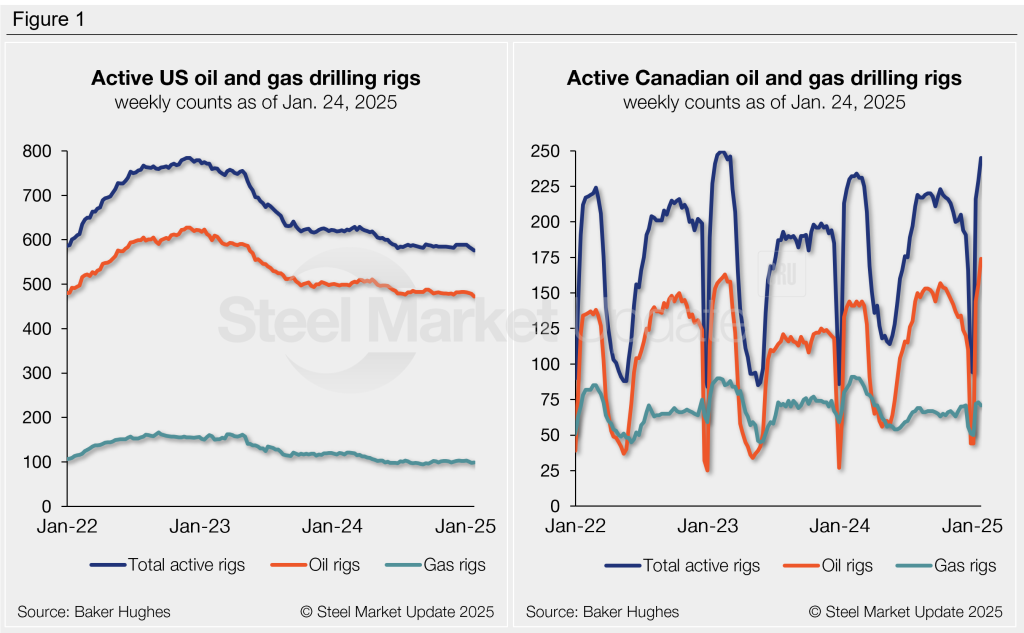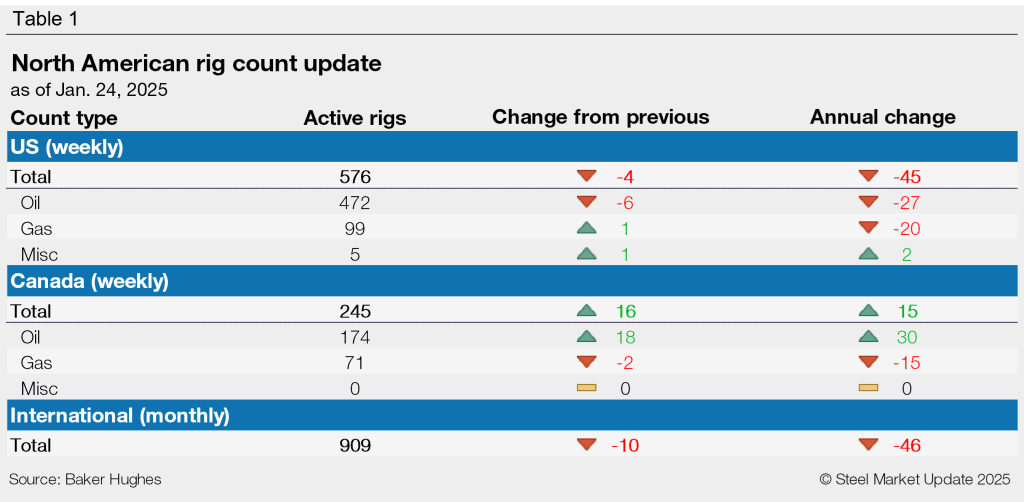Features

US rig counts decline further, increase in Canada
Written by Brett Linton
January 24, 2025
The number of active oil and gas rigs drilling in the US continued to decline last week, according to Baker Hughes, remaining at a multi-year low. Meanwhile, Canadian drilling activity marched to the beat of a different drum, rising to a near-two-year high this week.
The current US rig count is 576 rigs, marking the lowest weekly rate recorded since December 2021. US drilling activity has been at a reduced level since last June.
Canadian activity continues to rebound following the seasonal slowdown seen in late December and early January. Historically, Canadian counts often surge through February, then decline as warmer weather and thawing ground conditions limit access to drill sites and roads. The last week to see a higher Canadian count was back in March 2023.

The international rig count, updated monthly, decreased to 909 in December. This is down 10 rigs from the November count and 46 fewer than the same month one year prior.

The Baker Hughes rig count is important to the steel industry because it is a leading indicator of demand for oil country tubular goods (OCTG), a key end market for steel sheet. A rotary rig rotates the drill pipe from the surface to either drill a new well or sidetrack an existing one.
For a history of the US and Canadian rig counts, visit the rig count page on our website.

Brett Linton
Read more from Brett LintonLatest in Features

Final Thoughts
SMU’s hot-rolled coil price increased for a third consecutive week. And the gains were more pronounced this time following a price hike initiated on Friday by NLMK USA.

Saving US pig iron: NEMO Industries CEO Daniel Liss talks bringing back domestic production
NEMO Industries CEO talks cost and reasoning behind a $3-billion pig iron project in Louisiana.

Final Thoughts
SMU digs into the vault to look back at an old survey, and to tell what exciting things are still to come.

Price on Trade: The foolishness of free trade with controlled economies
It was only a matter of time before a shutdown happened. And, no, we aren’t talking about the federal government’s lapse in appropriations. On Oct. 9, Beijing announced a series of restrictions that will effectively shut down exports of rare earth elements, magnets, and certain downstream products vital to advanced manufacturing.

Trump pulls plug on trade talks with Canada after anti-tariff Reagan ad
US President Donald Trump took to social media late Thursday night to announce he was canceling trade talks with Canada.
